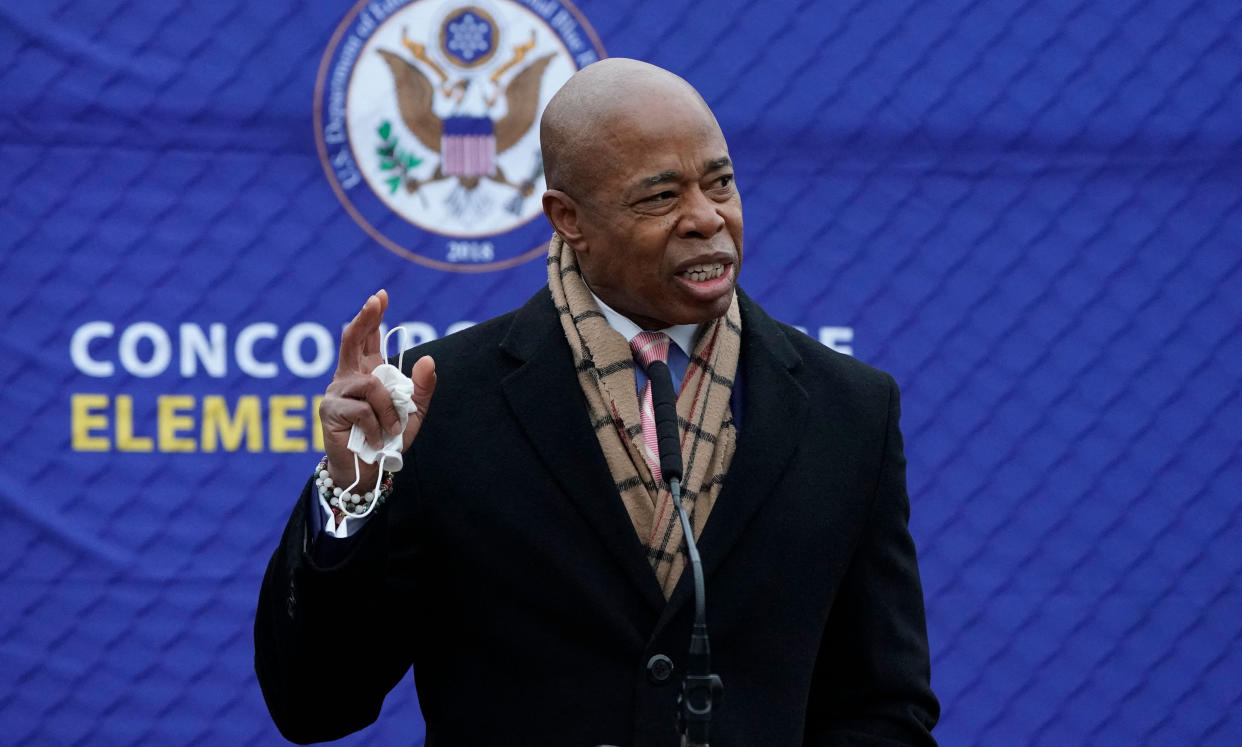NYC locking up more teenagers, holding them longer amid surge in felony busts

New York City is locking up more teenagers and keeping them longer behind bars, according to an early report card of Mayor Eric Adams’ second full year in office.
The number of young people held every day in the city’s youth facilities surged 31% over the past year to, on average, 260 detainees, last week’s preliminary Mayor’s Management Report showed. The city is also on track to admit more teens to juvenile detention this year.
“It’s much of a stain on New York City,” said Messiah Ramkissoon, associate executive director for strategic planning and community partnerships at Youth Justice Network. “Our children should be our greatest asset, our greatest priority.”
The city has two secure facilities just for young people, Crossroads Juvenile Center in Brooklyn and Horizon Juvenile Center in the Bronx. Between them, more than 630 teens were admitted to detention during the first several months of the fiscal year, between July to October, included in the report.
“The numbers are reflective of what we as practitioners are seeing inside the system,” said Sarah Legler, who is on Legal Aid’s Manhattan Youth Team. “There seems to be a presumption of custody for kids.”
The Administration for Children’s Services, which operates the centers, attributed the jump to an increase in arrests, some that related to gun violence. Police made 488 more juvenile arrests for major felonies at the start of this fiscal year than last, the report shows.
At the same time, the average number of days young people spent detained surged by 59%.
Legler said the main factor driving the length of detention is a “critical lack of access” to programs. The city’s main provider of family therapy for young people involved in the legal system shuttered last year because of budget cuts, she said, while a pretrial youth monitoring program has stopped taking kids due to capacity issues.
ACS chalked up the difference to state law reforms in 2019 that changed the legal process for some youth detainees.
“Following implementation of Raise the Age, the majority of young people in detention are now Adolescent Offenders with pending cases in the adult criminal court system,” child welfare officials explained, “which is a lengthier process than Family Court, where their cases would have been pending before Raise the Age.”
Overall, the number of 16- and 17-year-olds in custody, a slice of the juvenile detention population that would have been held in adult jails before Raise the Age and outside ACS’s purview, is about a third of the size it was a decade ago, according to Nancy Ginsburg, deputy commissioner of the Division of Youth and Family Justice at ACS.
“Much of this progress can be attributed to the historical investments New York City has made in community-based programs, which serve as effective alternatives to detention,” she said in an op-ed shared with the Daily News by ACS.
Still, the city’s average juvenile detention population has been growing each year since the pandemic.
After releasing some teens to stop COVID from spreading, the daily population hovered around 119 young people coming out of the health crisis’s peak. That figure jumped to 233 by last year.
Facilities have struggled to keep pace.
ACS plans to build an annex at Horizon, the Bronx facility, adding dozens of new beds to deal with the overcrowding, the New York Daily News first reported. At the end of last year, advocates sounded the alarm about teens sleeping in classrooms and hallways, after the state temporarily waived a requirement that each juvenile detainee get their own room.
The state agency that issued the waiver, the Office of Children and Family Services, recently extended it through April, state officials confirmed.
“We have kids sleeping in classrooms because we have packed our juvenile detention centers to the brim,” said Councilman Lincoln Restler, D-Brooklyn. “All we have heard from the Adams administration is plans to build larger jails to house more kids. For a mayor who has talked a lot about upstream solutions, this is the precise opposite approach.”
He criticized Adams’ budget cuts for slashing preventative programs that keep at-risk youth out of trouble.
Advocates say the solution is not to expand juvenile detention, but to invest in community groups that make neighborhoods safer for teens.
“Some are being locked up for gun violence,” Ramkissoon said, “but some are also being locked up for just having guns. Maybe they didn’t shoot anyone or hurt anyone, but they had possession of a weapon.”
“We see young people who are catching gun charges — or possession charges, rather. And it’s not because they plan to be violent, but really because they’re afraid for their own well-being and safety.”
_____


